Introduction
Nestled in the idyllic countryside of Suffolk, England, lies a site that has captivated the imagination of historians, archaeologists, and the public alike. Discovered in 1939, the Sutton Hoo burial site is one of the most significant archaeological finds in the United Kingdom, offering a rare glimpse into the rich cultural and political landscape of 7th-century Anglo-Saxon England.
This remarkable discovery, dating back to the early 7th century, features a grand ship burial filled with a treasure trove of artifacts, including exquisite gold and garnet jewelry, a magnificent ceremonial helmet, a sword, a shield, and other meticulously crafted objects. These artifacts not only showcase the remarkable artistry and craftsmanship of the era but also provide invaluable insights into the martial culture and power dynamics of the Anglo-Saxon world.

Despite the wealth of artifacts found at the site, the identity of the individual buried there remains a mystery. The acidic soil of the region has dissolved any human remains over time, leaving researchers to speculate on the possible identity of the person laid to rest in this grand and lavish burial. Many believe the site could be the final resting place of King Rædwald of East Anglia, a figure of significant power and influence during that period, but without physical evidence, the true identity of the individual remains elusive.
This blog post will delve into the captivating history of the Sutton Hoo burial site, exploring the significance of the artifacts, the potential identity of the individual buried there, and the enduring mysteries that continue to captivate scholars and the public alike.
The Discovery of Sutton Hoo
The Sutton Hoo burial site was first discovered in 1939 by a local landowner, Mrs. Edith Pretty, who noticed peculiar mounds on her property and decided to investigate. She enlisted the help of a local archaeologist, Basil Brown, to excavate the site, and what he and his team uncovered would forever change our understanding of Anglo-Saxon history.
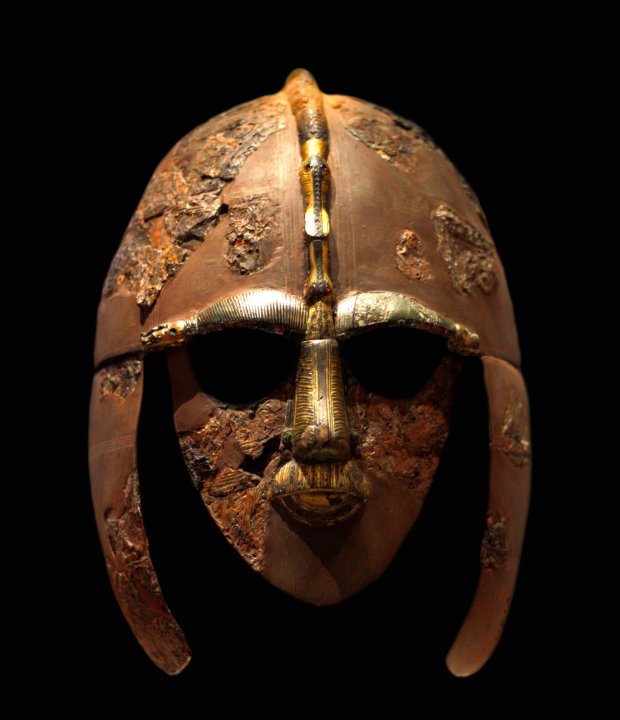
As the excavation progressed, the team uncovered the remains of a grand ship, approximately 27 meters (88 feet) long, which had been carefully buried in a large mound. This ship burial, a practice often associated with the burial of high-ranking individuals in Anglo-Saxon culture, was filled with an incredible array of artifacts, including:
- A magnificent ceremonial helmet, adorned with intricate designs and a warrior’s face mask
- A sword, shield, and other weapons and armor
- Exquisite gold and garnet jewelry, including a beautiful belt buckle and shoulder clasps
- A variety of household items, such as combs, bowls, and drinking vessels
- Textiles and other organic materials that have long since decomposed
The sheer scale and opulence of the burial site immediately captivated the attention of the archaeological community and the public alike. It was clear that this was the final resting place of a individual of immense power and influence, someone who held a prominent position in the Anglo-Saxon social and political hierarchy.
The Significance of the Sutton Hoo Artifacts
The artifacts discovered at the Sutton Hoo burial site are not only visually stunning but also provide invaluable insights into the cultural, artistic, and political landscape of 7th-century Anglo-Saxon England.
The Ceremonial Helmet
Perhaps the most iconic and captivating artifact found at Sutton Hoo is the magnificent ceremonial helmet. This intricate piece of metalwork is adorned with a warrior’s face mask, as well as a variety of animal and mythological motifs, including dragons, birds, and other fantastical creatures. The level of detail and craftsmanship is truly remarkable, showcasing the exceptional skill and artistry of the Anglo-Saxon metalworkers.

The helmet’s design and symbolism offer important clues about the individual buried at Sutton Hoo. The warrior’s face mask, in particular, suggests that the individual was a military leader or a high-ranking member of the Anglo-Saxon aristocracy, someone who was closely associated with the martial culture of the time.
Weaponry and Armor
In addition to the ceremonial helmet, the Sutton Hoo burial site yielded a variety of weapons and armor, including a sword, shield, and other military accoutrements. These artifacts further reinforce the notion that the individual buried at the site was a prominent military figure, someone who wielded significant power and influence within the Anglo-Saxon social and political hierarchy.
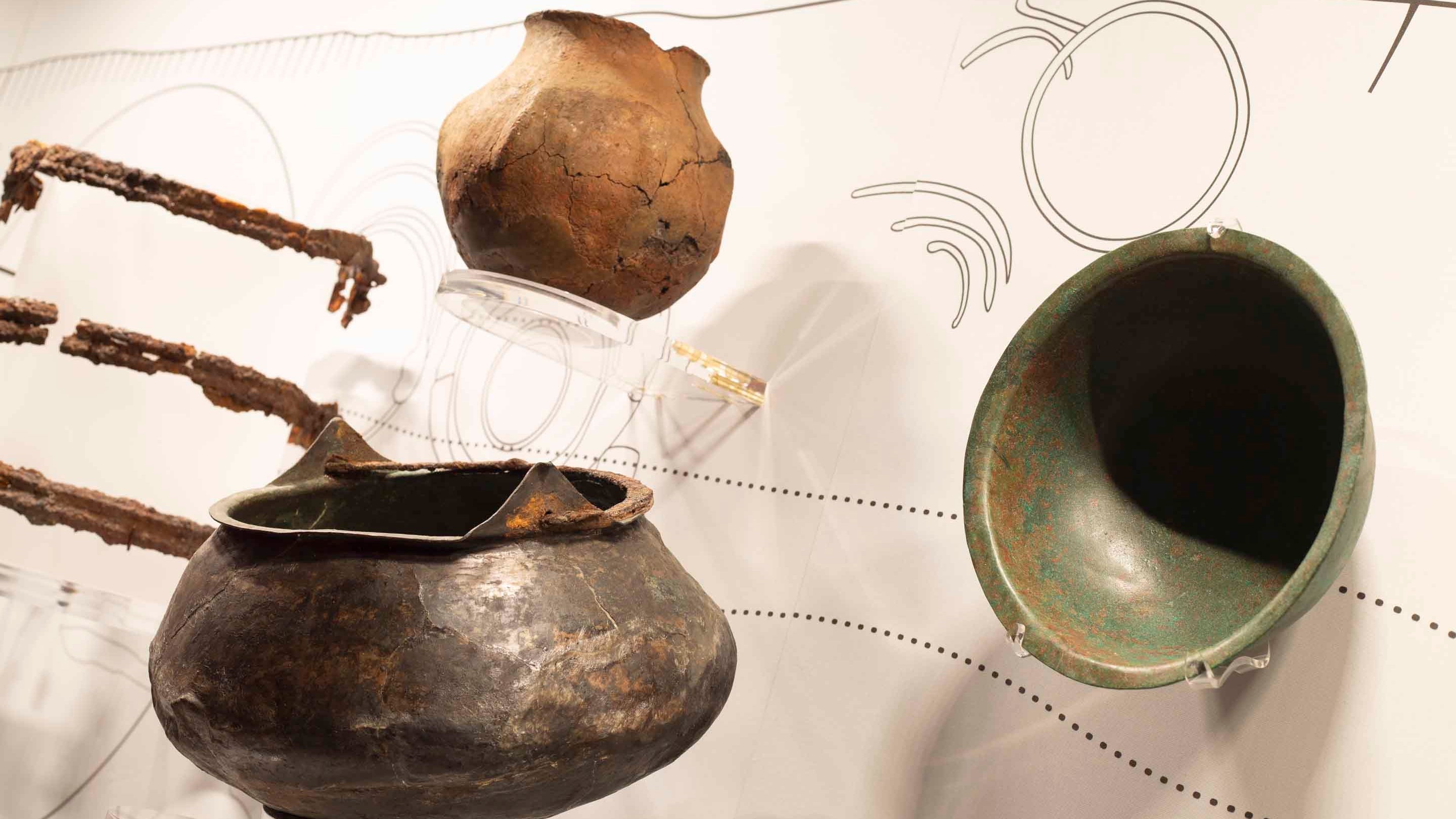
The sword, in particular, is a remarkable example of Anglo-Saxon craftsmanship. The blade is adorned with intricate patterns and inscriptions, while the hilt is decorated with gold and garnet, indicating the high status of the individual to whom it belonged.
Jewelry and Household Items
Beyond the impressive military artifacts, the Sutton Hoo burial site also yielded a wealth of personal items, including exquisite gold and garnet jewelry, as well as a variety of household objects such as combs, bowls, and drinking vessels. These items not only showcase the remarkable artistry and craftsmanship of the Anglo-Saxon people but also provide insights into the daily lives and cultural practices of the elite members of society.
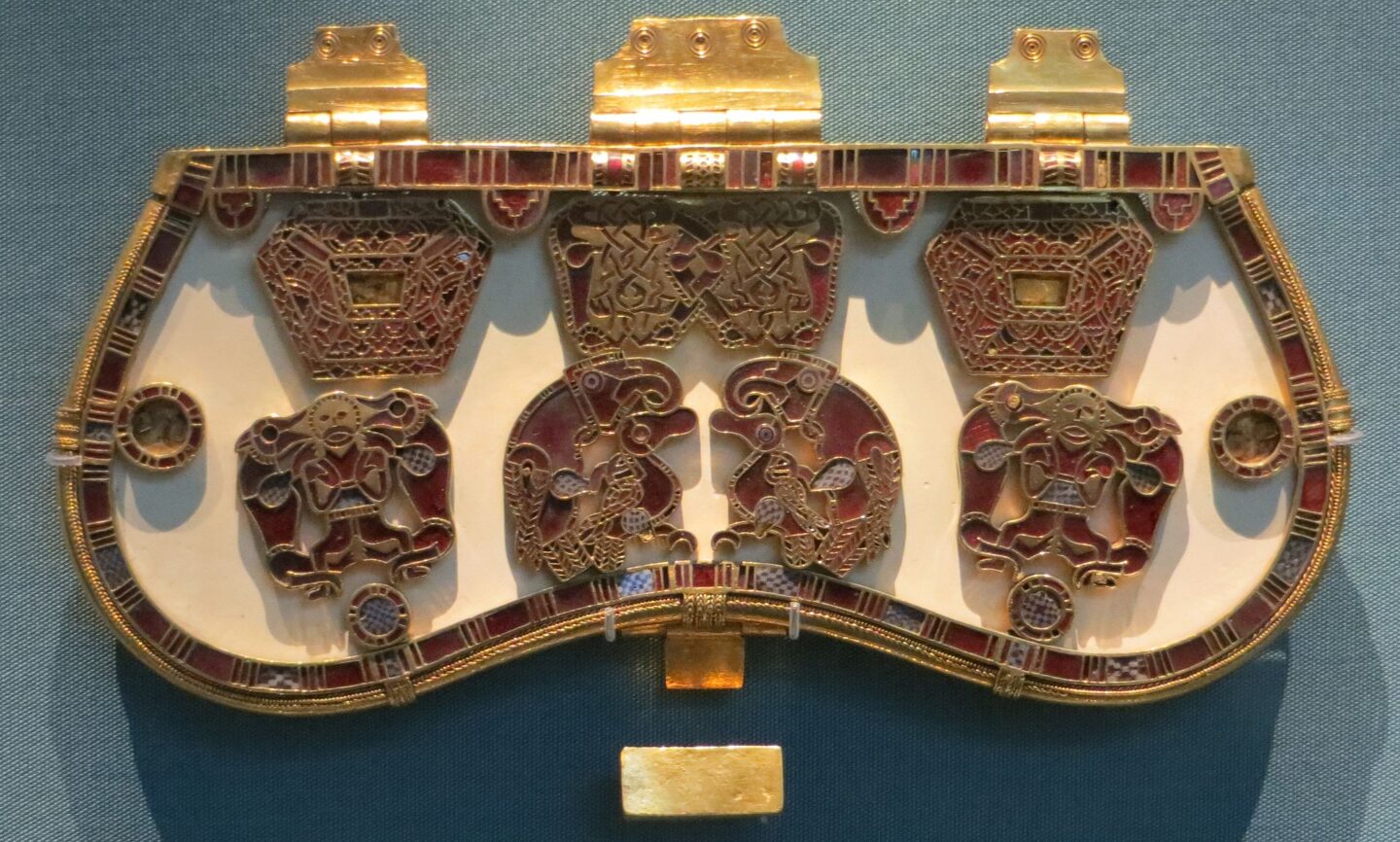
The gold and garnet jewelry, in particular, is a testament to the wealth and status of the individual buried at Sutton Hoo. These precious materials were highly coveted and were often reserved for the upper echelons of Anglo-Saxon society, further reinforcing the notion that the individual buried at the site was a person of immense power and influence.
The Identity of the Sutton Hoo Burial
One of the enduring mysteries surrounding the Sutton Hoo burial site is the identity of the individual who was laid to rest there. Despite the wealth of artifacts discovered, the acidic soil of the region has dissolved any human remains over time, leaving researchers with no physical evidence to conclusively determine the identity of the individual.
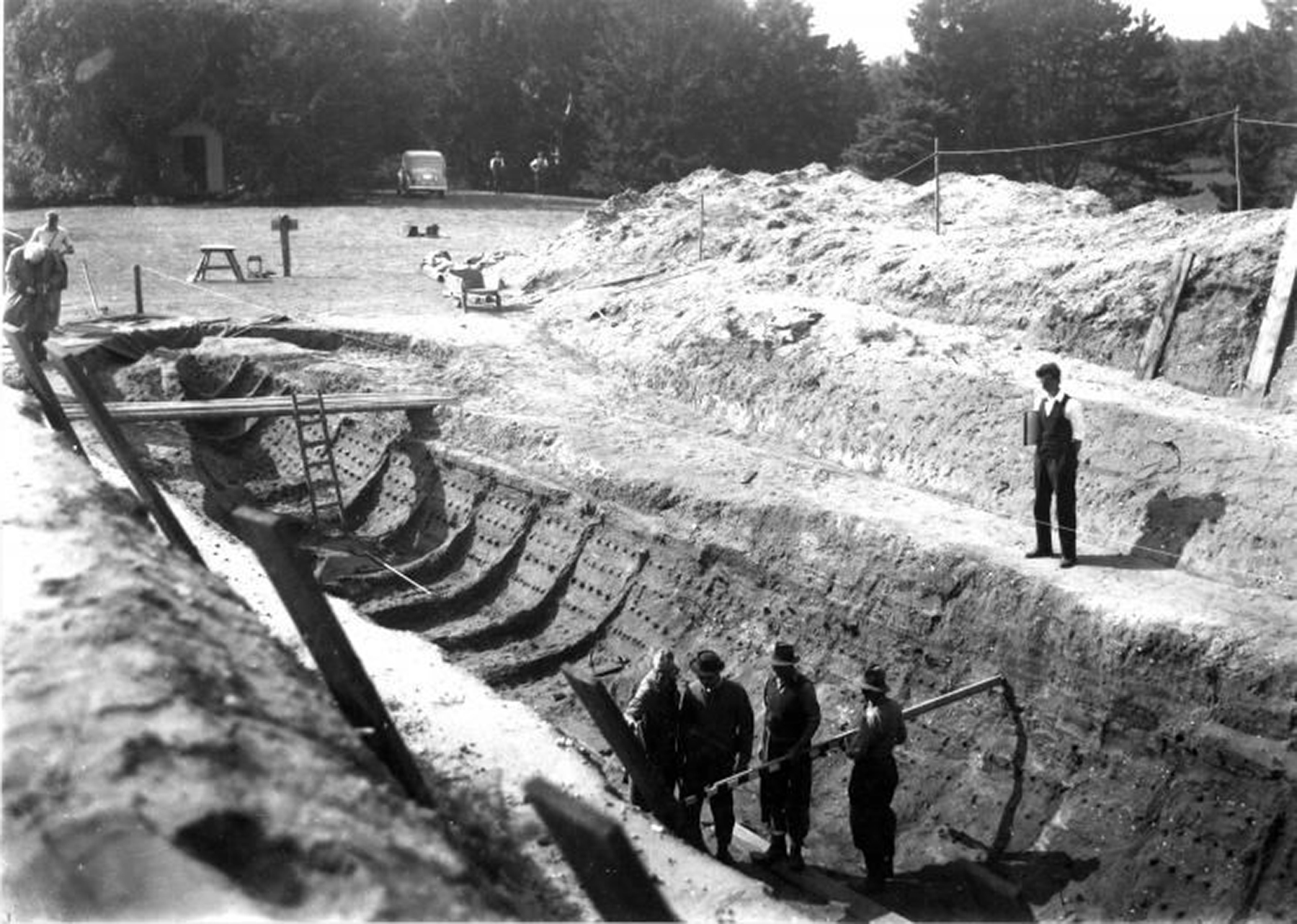
However, based on the scale and opulence of the burial, as well as the historical context of the time, many scholars believe that the individual buried at Sutton Hoo was likely a prominent figure in Anglo-Saxon society, possibly even a king.
The Potential Identity of King Rædwald
One of the most widely accepted theories is that the individual buried at Sutton Hoo was King Rædwald of East Anglia, a powerful and influential figure who ruled during the early 7th century. Rædwald was a significant political player in the region, and his reign coincided with the timeframe of the Sutton Hoo burial.
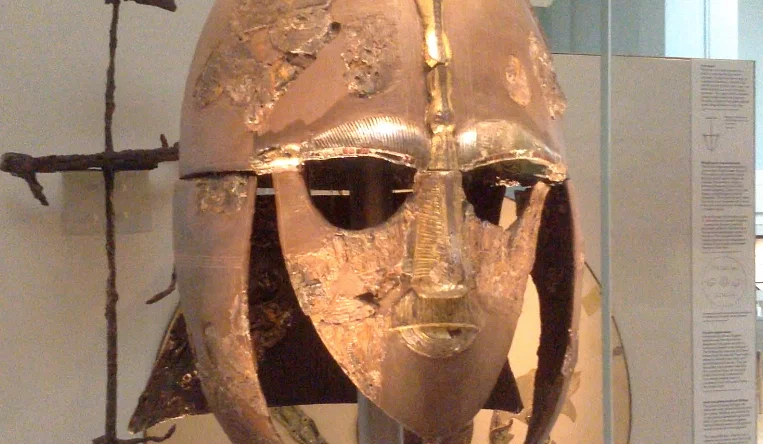
Rædwald’s status as a powerful king is further supported by the discovery of a king-size wooden coffin within the ship burial, as well as the presence of a Christian cross and pagan artifacts, suggesting that the individual buried at Sutton Hoo may have practiced a blend of Christian and pagan beliefs, a practice that was common among the Anglo-Saxon elite during this period.
However, despite the compelling evidence, the true identity of the individual buried at Sutton Hoo remains elusive. Without physical remains, researchers are unable to conclusively confirm the identity of the individual, leaving the mystery of Sutton Hoo to continue captivating scholars and the public alike.
The Enduring Legacy of Sutton Hoo
The Sutton Hoo burial site has left an indelible mark on our understanding of Anglo-Saxon history and culture. The wealth of artifacts discovered at the site, as well as the enduring mystery surrounding the identity of the individual buried there, have made Sutton Hoo one of the most significant archaeological finds in the United Kingdom.
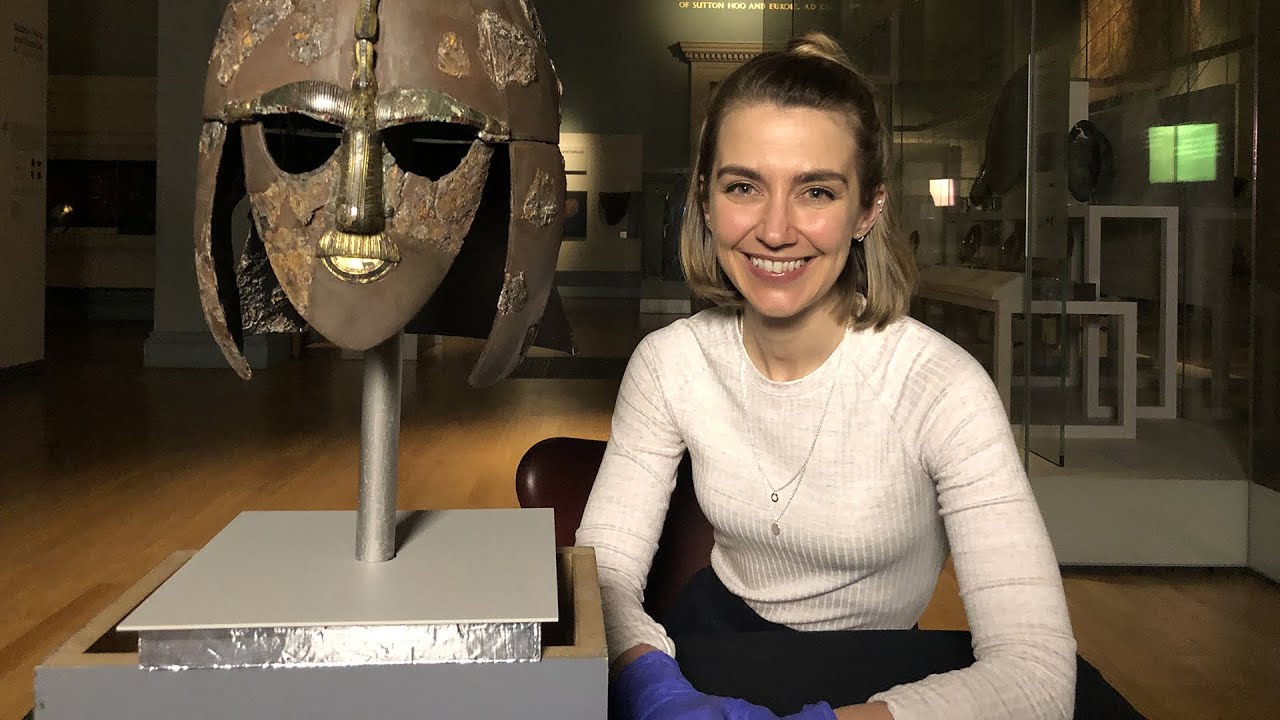
The site has become a testament to the remarkable artistry and craftsmanship of the Anglo-Saxon people, as well as the complex political and social dynamics that shaped the region during the 7th century. The ceremonial helmet, in particular, has become an iconic symbol of the Anglo-Saxon era, inspiring countless works of art, literature, and popular culture.
Moreover, the Sutton Hoo burial site has had a profound impact on the field of archaeology, serving as a model for how to approach and interpret large-scale burial sites. The meticulous excavation and preservation of the artifacts have set a high standard for archaeological research, and the site continues to be a source of inspiration and fascination for scholars and the public alike.
Conclusion
The Sutton Hoo burial site is a true treasure trove of Anglo-Saxon history, offering a rare and captivating glimpse into the cultural, artistic, and political landscape of the 7th century. From the magnificent ceremonial helmet to the exquisite gold and garnet jewelry, the artifacts discovered at the site provide invaluable insights into the lives and beliefs of the elite members of Anglo-Saxon society.
While the identity of the individual buried at Sutton Hoo remains a mystery, the enduring legacy of this remarkable archaeological find continues to captivate and inspire people around the world. Whether you’re a historian, an archaeologist, or simply someone with a deep fascination for the past, the Sutton Hoo burial site is a testament to the power of discovery and the enduring mysteries that continue to shape our understanding of history.

